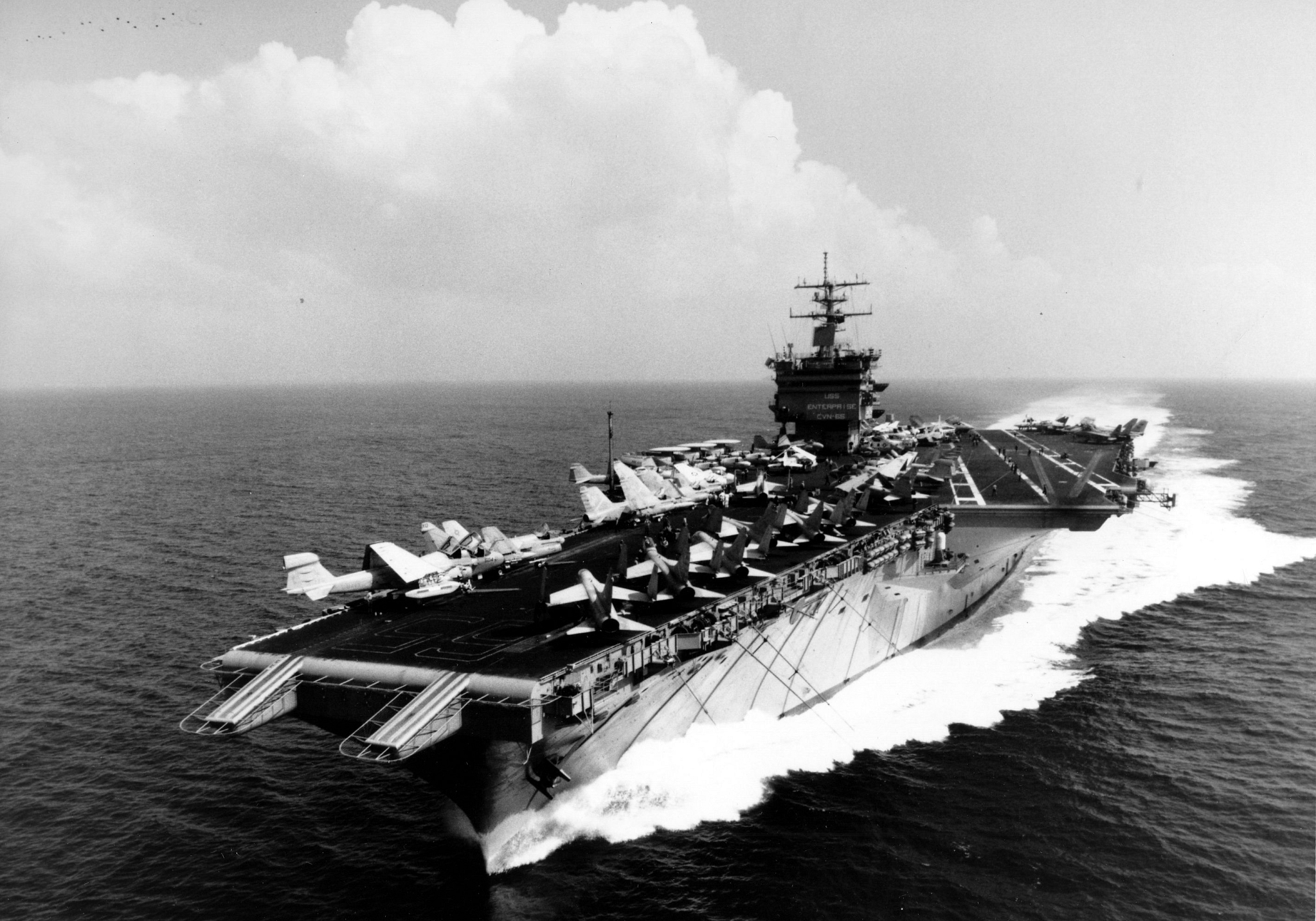Defence
On This Day, In 1971, India Tightened The Noose On Dhaka, While US Seventh Fleet Raced To Bay Of Bengal To Defend Its Ally — Pakistan

USS Enterprise in1986. (Naval History and Heritage Command Photograph)
On this day (13 December), in 1971, the Indian Air Force (IAF) kept up pressure on the now surrounded Pakistani Garrison at Dhaka from three sides, while the United States carrier Taskforce 74 crossed the Malacca Straits to defend its ally — Pakistan — from imminent defeat.
The air force conducted 110 sorties to attack enemy positions, softening them up, allowing easy movement of Indian army formations, which had by now surrounded Dhaka from three sides.
The IAF dropped close to 40 tonnes of bombs on the Joydebpur Ordnance factory, starving the Pakistani army of its critical ammunition.
The radar at Badin was again struck, while a bombing pause was put in place at Pakistan's Air Force (PAF) Chaklala airbase, allowing foreign nationals to depart. A similar temporary pause was also given at Tezgaon in the east.
The IAF conducted 80 sorties, particularly focusing on hitting road/rail links on the western front. It also took extensive aerial imagery to enable the Indian army to better plan its offensives.
On the other hand, sensing the critical situation in the east, Pakistan's Ambassador to the US, General Raza, on 13 December, requested the deployment of the US seventh fleet to the Bay of Bengal.
General Raza's thinking was to have the US seventh fleet divert some of the Indian naval resources, relieving the pressure on the eastern front.
However, the twelve-ship TaskForce-74, led by the aircraft carrier USS Enterprise, was already moving towards the Bay of Bengal at full steam and had crossed the Malacca Straits on the nights of 12/13 December.
On 14 December, the US government would make a formal announcement about the movement of the seventh fleet to the Bay of Bengal, on the pretext of safeguarding US citizens in eastern Pakistan, but more on that later.
The intensive bombing campaigns of the IAF stabilised the critical situation in the Chhamb sector, while it was actively conducting precision bombing runs in support of the Indian army's 1st Corps armoured thrust in the Shakargarh bulge.
These bombing runs and the bravery of Lieutenant Arun Kheterpal would eventually lead to a hard-fought and bloody victory in the Battle of Basantar, against the Pakistan army's determined armoured offensive between 15 to 17 December.
Four Mig-21 fighters of the IAF would also bomb the Governor's House on 14 December, providing immediate clarity to the as-yet undecided Governor of East Pakistan, A M Malik, on whether to resign or not, to write his resignation letter to the United Nations (UN).
With Governor Malik's resignation letter to the UN, the entire government of East Pakistan would resign, leaving the still belligerent Eastern Pakistan army commander, Lt Gen A A K Niazi, alone to fend off the Indian army and Mukti Bahini attacks.
Meanwhile, the hardy troops of the Ladakh Scouts and Nubra Guards are preparing for an assault on Turtuk to be conducted the next day (14 December), not knowing that the Pakistan forces defending Turtuk would abandon the village that night without engaging in battle, leaving the population of the village behind.
Support Swarajya's 50 Ground Reports Project & Sponsor A Story
Every general election Swarajya does a 50 ground reports project.
Aimed only at serious readers and those who appreciate the nuances of political undercurrents, the project provides a sense of India's electoral landscape. As you know, these reports are produced after considerable investment of travel, time and effort on the ground.
This time too we've kicked off the project in style and have covered over 30 constituencies already. If you're someone who appreciates such work and have enjoyed our coverage please consider sponsoring a ground report for just Rs 2999 to Rs 19,999 - it goes a long way in helping us produce more quality reportage.
You can also back this project by becoming a subscriber for as little as Rs 999 - so do click on this links and choose a plan that suits you and back us.
Click below to contribute.
Latest